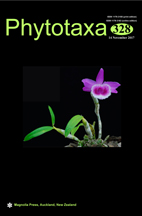Abstract
This research was carried out to better define the pollen, fruit and seed morphology of Ambrosina bassii, the only species of this rare Mediterranean endemic genus. Pollen traits were already known, but here we investigated on their variability in distant populations and in different morphotypes (‘varieties’). Fruit and seed traits were almost unknown, also because of the rarity of fruit-set in this species. The surface features of pollen, fruit and seed, as well as length, width and length/width ratio, were analysed by means of scanning electron microscopy (SEM). Comparative observations were made also on Arisarum vulgare, since Arisarum is the closest genus. The principal component analysis of the Ambrosina pollen traits highlighted a separation of the different varieties and populations. As regards the surface features, the ornamentation of Ambrosina pollen is predominantly striate while in A. vulgare is striate-foveolate. The fruit of Ambrosina is a dry globose capsule showing stomata, not observed in the A. vulgare fruit. The seed is strophiolated with a reticulate surface. The results are discussed in comparison with previous observations and with morphological evolutionary patterns in the Araceae.

